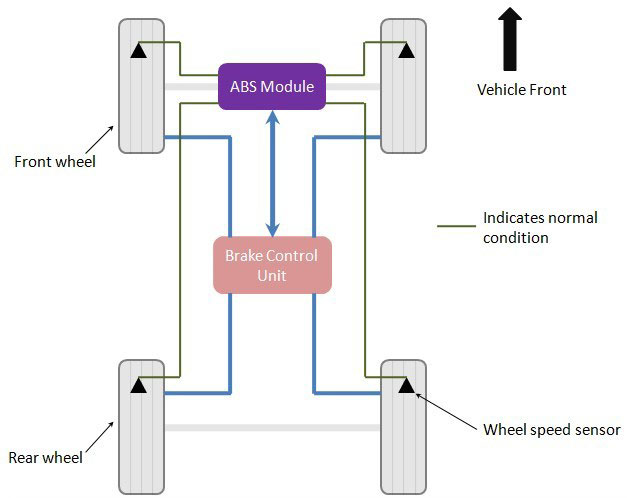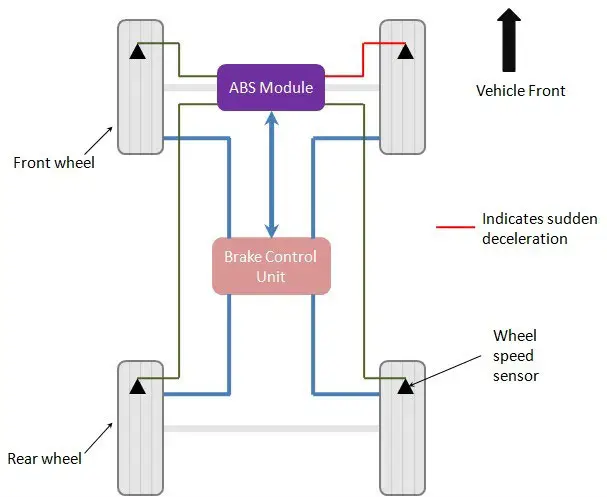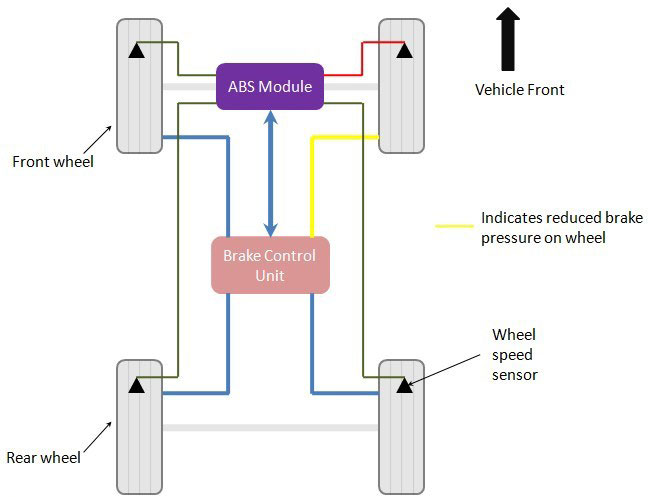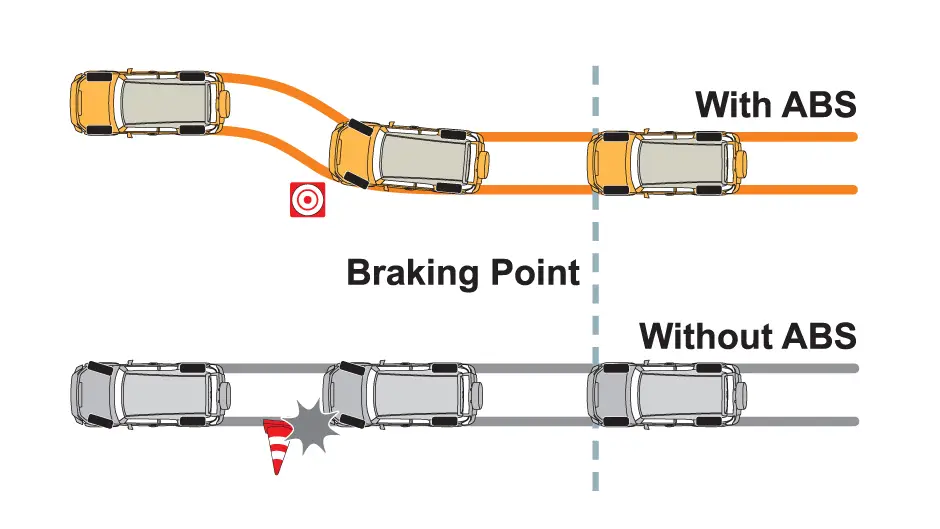What is Antilock Braking System (ABS) in a car?
Antilock Braking System (ABS) is a type of vehicle’s active safety system. It is also known as the anti-skid braking system. This system comes into action when the driver suddenly applies the brakes during an emergency. Employing the antilock braking system on cars and bikes is now mandatory in most parts of the world.
The need for Anti-lock Brakes:
Whenever the driver suddenly applies the brakes to a high-speed vehicle, there is always a chance of the ‘wheel-lock.’ The wheel-lock means that the respective wheel stops suddenly instead of slowly coming to a halt. Due to the wheel-lock, the driver loses control over the vehicle, and the vehicle skids off the road. Thus, a fatal accident takes place. In order to avoid such situations, the manufacturers employ the ABS.
Components:
The ABS has the following components:
- Wheel speed sensors
- ABS control module
- Brake control unit
- Valves
- Pump

Wheel speed sensors continuously monitor the speed of each wheel. As long as all the wheels have comparable speed, the system does not interfere with their operation. However, if the speed sensors find that any of the wheels’ speed is reducing drastically, it means that the particular wheel is going to lock.
However, the locked wheel hampers vehicle stability. Thus, the vehicle stops responding to the steering input given by the driver. At this moment, the vehicle also starts to skid, thereby causing a fatal accident. To avoid such a mishap, the ABS comes into action.

How does the ABS work?
After receiving the signal of very low speed from the wheel speed sensor, the ABS module orders the brake control unit to reduce that wheel’s braking force. Reducing the braking force means reducing the hydraulic pressure in the brake line acting on that wheel. The Brake Control Unit reduces the line pressure with the help of valves in the system. The wheel starts rotating faster when the braking force reduces, thereby avoiding the wheel-lock. As the wheel doesn’t lock, the vehicle’s steerability remains intact. Thus, it means that the vehicle moves according to the driver’s input without skidding. Once the Brake Control Unit restores the regular operation, it also restores the brake line’s hydraulic pressure with the help of a pump.

Advantages of Antilock braking system:
- ABS maintains the vehicle’s steerability and stability during panic braking.
- It reduces the braking distance by up to 10% or more, especially on wet surfaces.

Disadvantages:
Perhaps the only disadvantage of the Antilock Braking System is its higher cost. In recent times, purchasing the Antilock Braking System installed bike or car costs significantly to the customer. However, this higher cost entirely offsets the improved safety this system provides. Also, the auto industry is working on developing a low-cost version of the antilock braking system.
Classification of ABS:
Based on the number of speed sensors and valves, the Antilock Braking System is of the following types:
| Sr. No. | Type of ABS | Description |
| 1 | Four channel-four sensor ABS | Each wheel has a separate valve and sensor |
| 2 | Three channel-four sensor ABS | (i) A separate sensor for each wheel.
(ii) Separate valves for front wheels. (iii) Rear wheels controlled by only one valve. |
| 3 | Three-channel- three-sensor ABS | (i) A valve and a sensor each for front wheels.
(ii) One valve and one sensor for rear wheels. |
When the antilock braking system activates, the driver may feel pulsations in the brake pedal. However, it depends on the severity of the braking condition. Thus, it is absolutely normal. However, you must not release the brake pedal during this phase to prevent the system from working correctly.
Motorcycle ABS:
Motorcycle ABS is a small-scale version of a car ABS. However, its working is precisely similar to the full-scale car version. Besides, it requires fewer valves and wheel speed sensors due to only two wheels.
According to Bosch, using motorcycle ABS increases the bike’s stability and improves riding comfort. The company has also proved that the braking distance reduces considerably when it uses the anti-lock braking system.
Watch Antilock Braking System in action:
Read more: Electronic Brakeforce Distribution (EBD)>>
